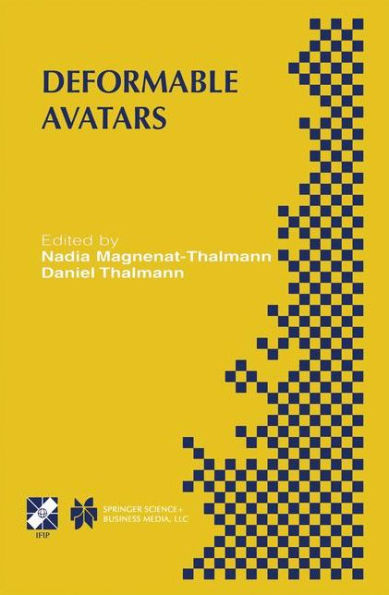5
1
9780792374466


Deformable Avatars: IFIP TC5/WG5.10 DEFORM'2000 Workshop November 29-30, 2000 Geneva, Switzerland and AVATARS'2000 Workshop November 30-December 1, 2000 Lausanne, Switzerland / Edition 1 available in Hardcover

Deformable Avatars: IFIP TC5/WG5.10 DEFORM'2000 Workshop November 29-30, 2000 Geneva, Switzerland and AVATARS'2000 Workshop November 30-December 1, 2000 Lausanne, Switzerland / Edition 1
- ISBN-10:
- 0792374460
- ISBN-13:
- 9780792374466
- Pub. Date:
- 08/31/2001
- Publisher:
- Springer US
- ISBN-10:
- 0792374460
- ISBN-13:
- 9780792374466
- Pub. Date:
- 08/31/2001
- Publisher:
- Springer US
169.99
In Stock

Product Details
| ISBN-13: | 9780792374466 |
|---|---|
| Publisher: | Springer US |
| Publication date: | 08/31/2001 |
| Series: | IFIP Advances in Information and Communication Technology , #68 |
| Edition description: | 2001 |
| Pages: | 248 |
| Product dimensions: | 6.14(w) x 9.21(h) x 0.02(d) |
From the B&N Reads Blog
